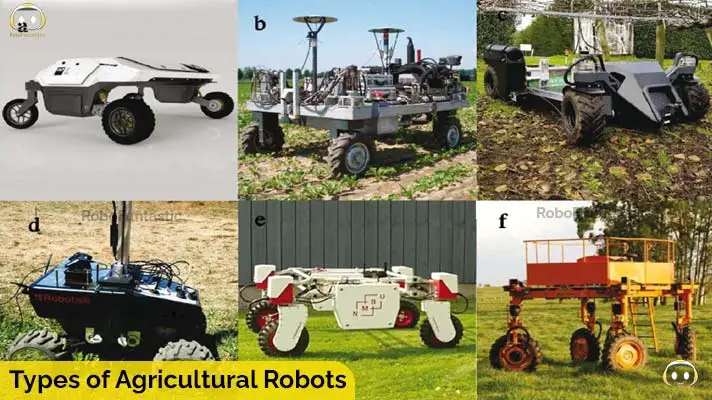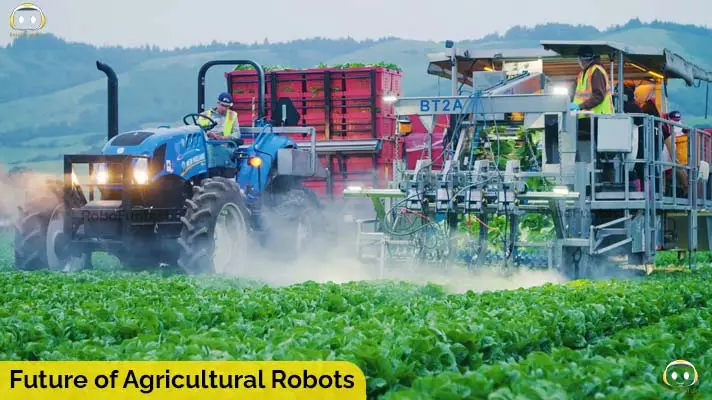The use of robots in agriculture has been steadily increasing over the past decade. Robots are able to take over certain farming tasks, improving efficiency and productivity. There are many different ways that robots are being utilized on farms today.
Introduction
Agriculture has usually been an industry ripe for innovation and generation. Farmers are continually seeking out approaches to increase yields, reduce prices, and make their operations extra efficient and profitable. The integration of robotics and automation into agriculture has spread out new opportunities in this place.
Robots are actually getting used for quite a few agricultural responsibilities. They are capable of precisely plant seeds, screen crop growth and fitness, prune vines and timber, harvest plants, milk cows, and even shear sheep. Robotic generation is also being applied in vertical farming operations and livestock control.
Benefits of Using Robots in Agriculture
There are many ability benefits that include using robots on farms:

Increased efficiency and productivity
Robots can paintings quicker and greater exactly than human beings in a few obligations. This can cause better crop yields and advanced efficiency.
Labor shortages
Many farms face hard work shortages as fewer employees are inclined to engage in manual agricultural hard work. Robots can fill gaps inside the body of workers.
Consistency
Robots perform obligations in a specific, consistent manner which may also lead to advanced first-class.
Hazardous tasks
Robots can take over potentially risky jobs and decrease risks for farm employees.
Sustainability
Precision farming enabled via agricultural robots can lessen waste, reduce fossil gasoline use, and decrease chemical inputs.
Data collection
Robots equipped with sensors can gather statistics to help farmers display crops and make higher choices.
Types of Agricultural Robots

There are several categories of agricultural robots including:
Planting robots – Automatically plant seeds at the optimal depth and spacing. Some can plant over 100,000 seeds per hour.
Weeding robots – Use vision technology to identify weeds and control them without herbicide by mechanically uprooting or zapping with lasers.
Harvesting robots – Pick ripe fruits and vegetables on orchards and vineyards. Some use robotic arms, others drive over rows.
Milking robots – Milk cows without human labor. The cow wears a RFID tag so the robot can identify her and connect its own arms.
Shearing robots – Shear sheep using advanced sensors, neural networks, and algorithms to match human shearers.
Crop monitoring robots – Use machine learning and computer vision to monitor crop health across fields.
Pruning robots – Use articulated arms with cutting tools to prune vines in vineyards autonomously.
Seed planting robots – Precisely plant each seed at the proper depth and spacing to maximize crop yields.
Weed control robots – Remove weeds from fields through mechanical uprooting or lasers without herbicides.
Livestock management robots – Monitor livestock health, transport feed, clean barns, identify lameness issues.
Major Applications of Agricultural Robots
Here are some of the major applications where robotic technology is being used on farms today:
Harvesting
Robots are increasingly more used for choosing fruit and vegetables that require delicate coping with. This includes strawberries, apples, citrus end result, and peppers.
Weeding
Small robots can mechanically uproot weeds or use lasers to kill them, lowering the want for herbicides. Root vegetation like potatoes and carrots particularly benefit.
Pruning
Robots with articulated palms can precisely prune grape vines, fruit bushes, and different crops in line with particular parameters.
Planting
Planting robots can space seeds or seedlings at the most efficient distance to maximise growth as they area them in soil.
Milking
Automatic milking systems permit cows to be milked without human hard work, frequently growing milking frequency.
Crop spraying
Unmanned aerial automobiles (UAVs) can scan fields and precisely spray pesticides and fertilizers simplest on vegetation that require them.
Soil and crop tracking
Specialized robots can create soil nutrient maps, come across ailment, display irrigation, and watch usual crop fitness.
Shearing
Robots are being developed that can quickly shear sheep while being gentler and causing less nicks and cuts.
Vertical farming
Robots enable highly efficient vertical farming operations where food is grown in stacked layers under LED lights.
Sorting/packing
Machine vision systems can identify and sort crops for packing and distribution by sight.

The Future of Agricultural Robots
Experts predict the future will see an explosion in robot use on farms:
- Fully autonomous farm equipment like tractors and harvesting machines that can cultivate and work fields with no human oversight.
- Rise in small robots for focused tasks such as pruning and weeding. Swarms of robots may tend plots together.
- Robotics used in producing more crops in greenhouses and vertical farming operations.
- Investment in research to make agricultural robots smarter, more flexible, and less costly.
- Tighter integration of autonomous drones, self-driving tractors, AI, and internet of things connectivity on farms.
- While agricultural robots will not fully replace human labor in the near future, they will take over an increasing number of tasks. This should boost productivity while reducing costs for farmers. We are only beginning to see the transformational possibilities of robotics in agriculture.
Table on Types of Agricultural Robots and Their Uses
| Type of Robot | Key Uses |
| Planting Robots | Plant seeds and seedlings with precision spacing; Can work continuously without breaks |
| Weeding Robots | Remove weeds mechanically or with lasers to reduce herbicide use |
| Harvesting Robots | Pick ripe produce like fruit and vegetables on orchards and vineyards |
| Milking Robots | Milk cows without human labor; Attach to cow’s udder independently |
| Pruning Robots | Use articulated arms to prune vines, trees and shrubs based on parameters |
| Crop Monitoring Robots | Monitor fields for signs of disease, pests, irrigation issues using sensors |
| Seed Planting Robots | Plant individual seeds at optimal depth and spacing to maximize yields |
| Weed Control Robots | Remove weeds through mechanical uprooting or lasers without herbicides |
| Livestock Management Robots | Monitor livestock health, transport feed, clean barns, identify lameness |
| Shearing Robots | Shear sheep quickly while being gentler and causing less nicks/cuts |

Pros of Agricultural Robots:
- Increased efficiency and productivity
- Help address labor shortages on farms
- Perform tasks consistently for improved quality
- Can take over hazardous tasks to improve safety
- Enable more sustainable farming practices
- Provide valuable data collection and analytics
Cons of Agricultural Robots:
- High upfront costs to purchase and maintain
- Could reduce need for some farm labor
- Technical skill required to run and fix robots
- Reliant on durable sensors and hardware
- Could take decision-making away from farmers
- Not flexible or intelligent enough yet for complex tasks
Conclusion
The use of robotics in farming and agriculture holds tremendous potential. Robots are already taking over routine yet crucial tasks like planting seeds, pruning vines, picking fruits and vegetables, and milking cows. Looking ahead, they will become more widely integrated into agricultural operations.
With the many benefits like increased efficiency, reduced labor costs, and minimized chemical use, agricultural robots are poised to revolutionize farming. We can expect amazing innovations in this field in the years ahead. Implemented thoughtfully, robotic automation can support more sustainable, productive agriculture while providing valuable data insights for farmers.
Frequently Asked Questions on Agricultural Robots
How widely are robots used in farming today?
Robots are still only used in a small minority of overall farms, but their use is rapidly increasing each year. The more routine, repetitive and precise the task, the more likely it is to utilize robots.
How cost-effective are agricultural robots?
While the initial investment may be high, robots can save money over time through more efficient operations and reduced need for labor. Less waste, better yields, and data insights also improve cost-effectiveness. The costs are dropping as technology improves.
Can farmers afford to buy agricultural robots?
Right now, the costs put many robots out of reach for small to medium farms. Leasing robots or contracting robotic services may be more realistic. Government subsidies could also help farmers adopt agricultural robots. As costs fall in the future, more farmers will be able to justify purchases.
Will robots replace human farm workers?
In the short term, robots will take over some repetitive and physically taxing jobs. But human oversight, expertise and labor will remain critical in agriculture. Robots complement human workers more than replace them. There are many tasks that still require human judgment and flexibility.


